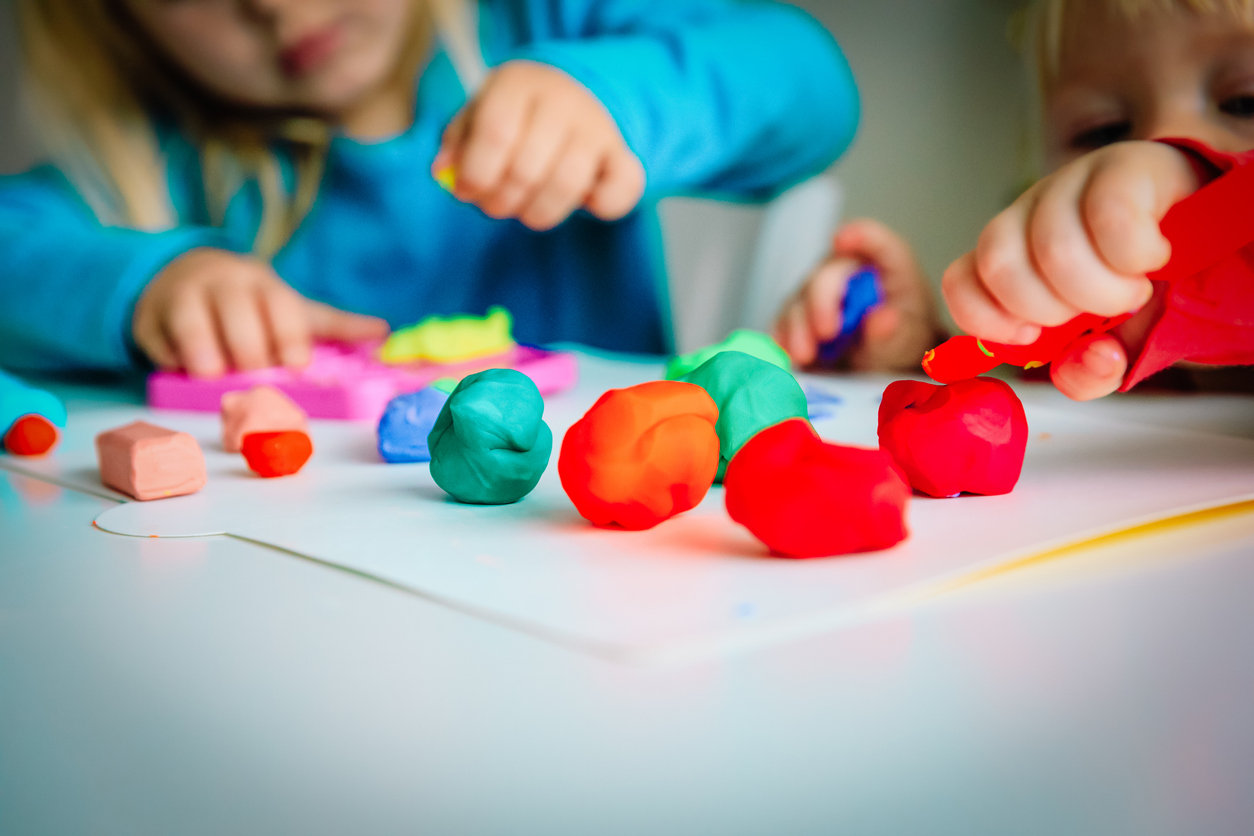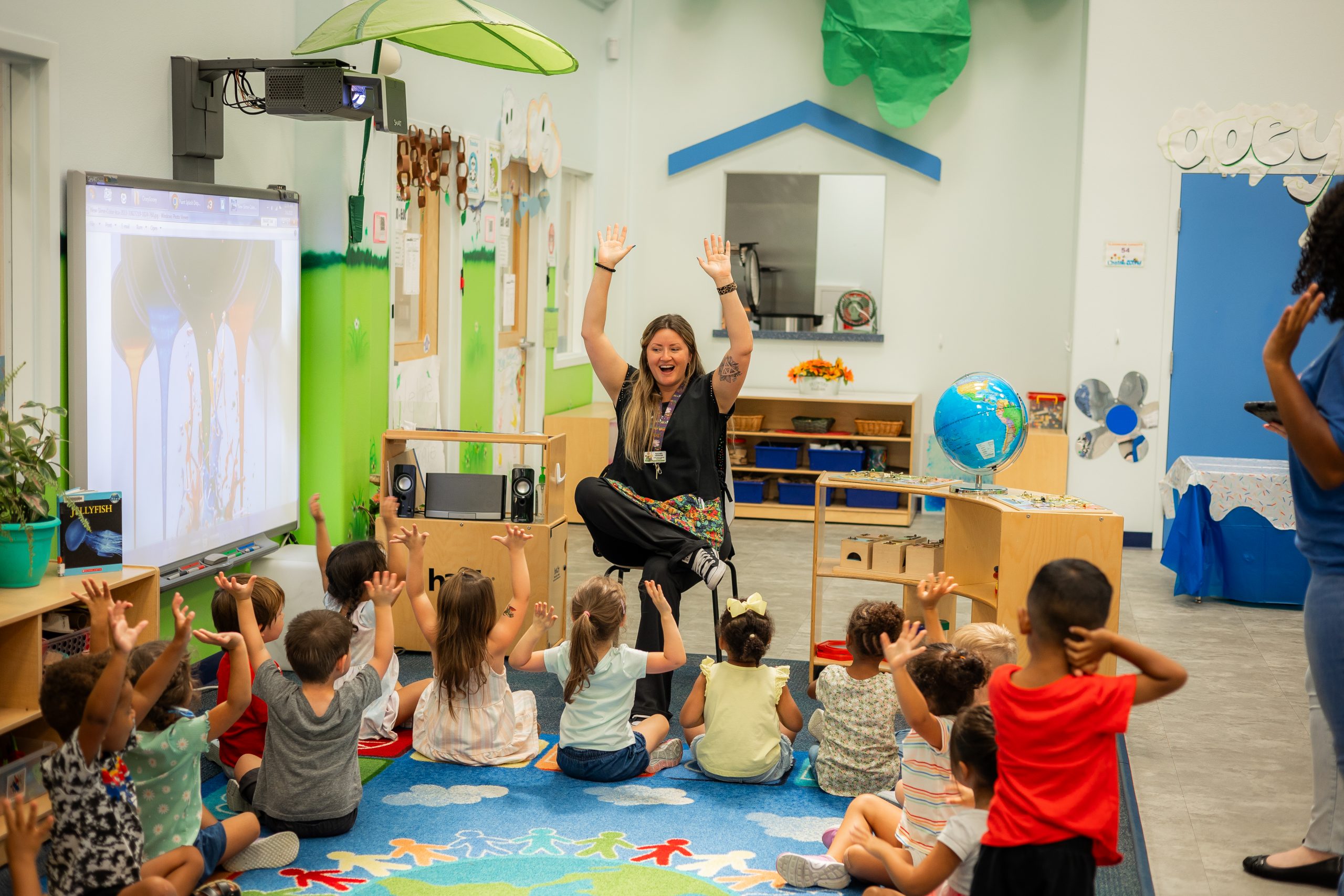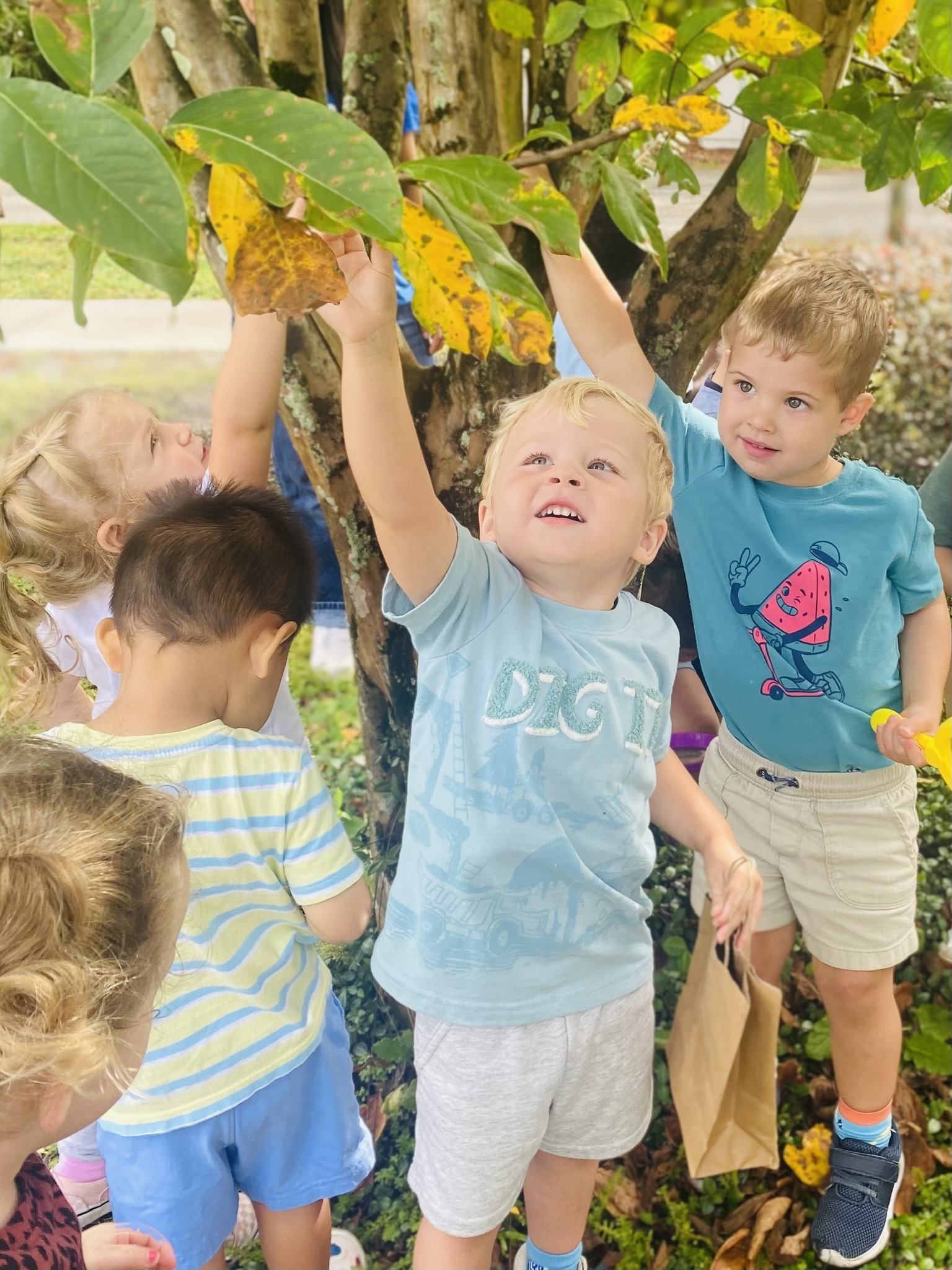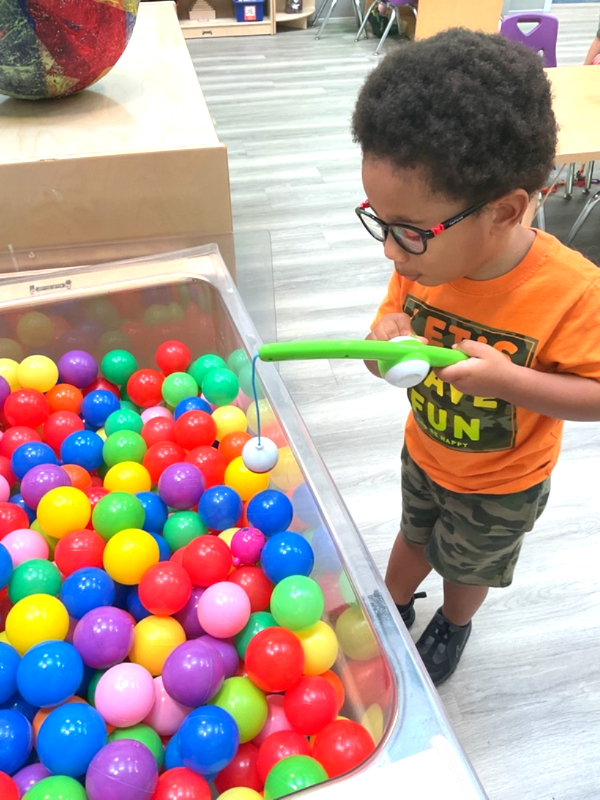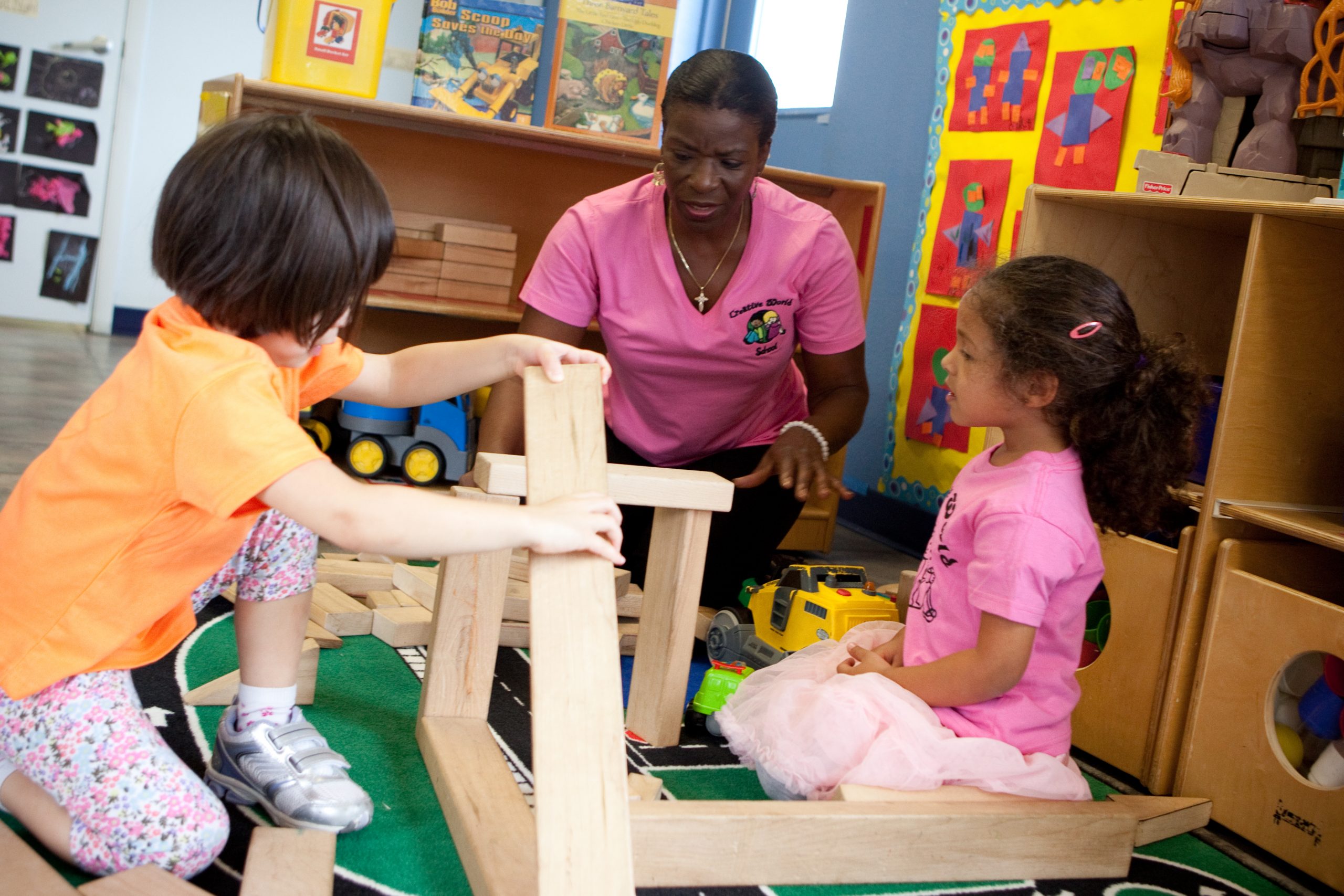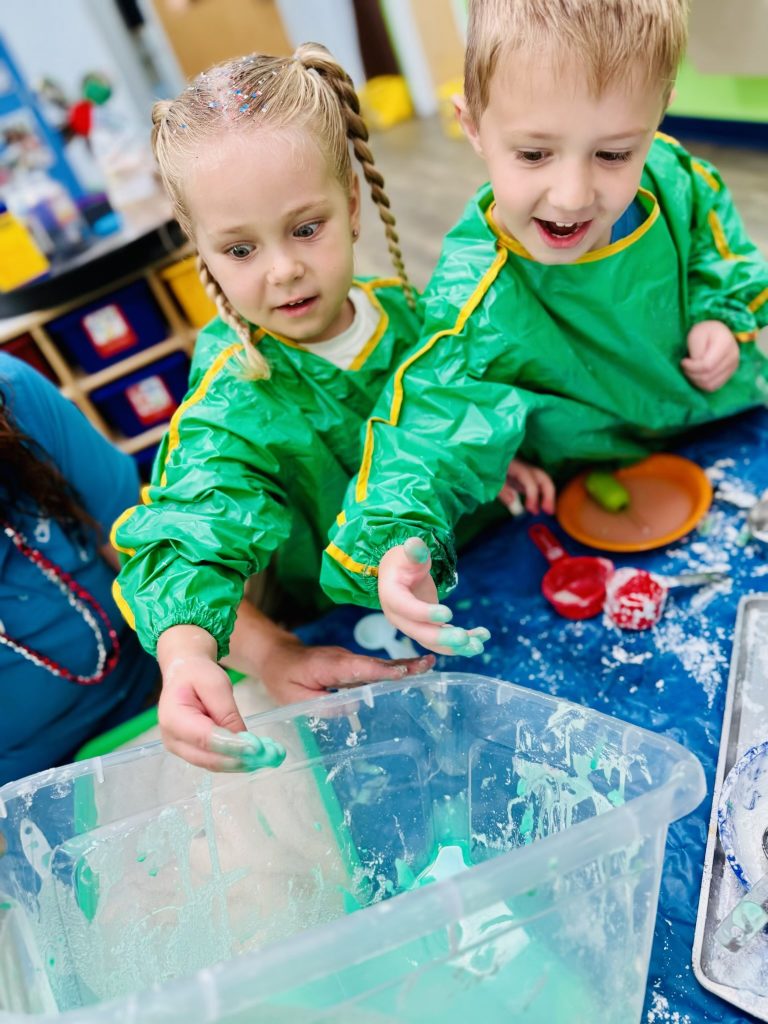
Scoop, Squish, Splash: Easy DIY Sensory Play Ideas for Curious Toddlers
Creative world school Oct 3, 2025Ever hand your toddler a mixing bowl of dry pasta and watch them go completely silent like a tiny chef deep in thought? Or give them a sponge and a puddle and suddenly they’re scrubbing the patio like it’s their full-time job? That’s sensory play doing its thing.
Toddlers are built to explore with all five senses, and their nervous systems are still under construction. Every scoop, squish, and splash helps them figure out how the world feels, sounds, and moves. And yes, the constant mouthing of toys, spoons, and basically everything? That’s part of the plan. Their mouths are one of the best tools they have for learning about texture, shape, and temperature.
Keep reading for easy sensory play ideas that turn everyday stuff into hands-on adventures your toddler will love (and maybe give you a few quiet minutes too).
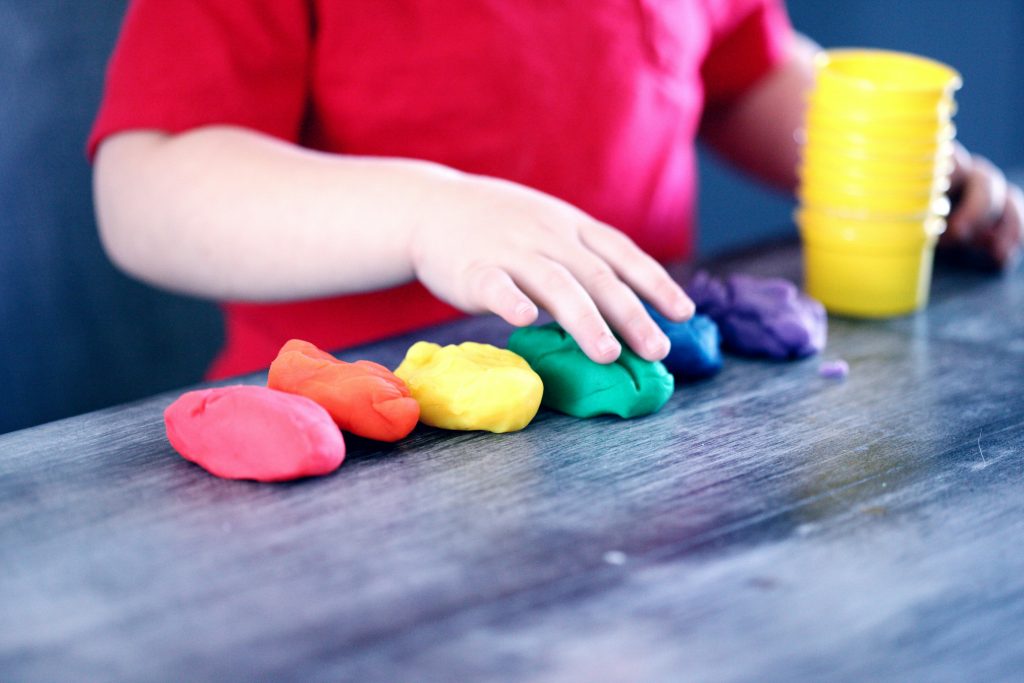
Big Learning Hides in Small Moments
Sometimes, the best sensory activities really are the simplest. One favorite at-home option is a rice bin. Fill a shallow tub with dry rice or beans, then add measuring cups, spoons, or a few small toys. That is all it takes to create a whole new world of play right on the kitchen floor.
As your child plays, they’ll be practicing hand-eye coordination, exploring textures, strengthening focus, and even absorbing early math concepts like volume and weight while scooping and dumping.
Another classic option is water play. A shallow tub of water with a couple of plastic cups quickly becomes a pouring and splashing masterpiece. Add a plastic doll and it becomes bath time. Add sponges and suddenly it is a car wash. Water is calming, familiar, and excellent for strengthening the fine motor muscles children need for writing, buttoning, and tying later in life.
Make-Your-Own Sensory Bins
Homemade sensory bins do not need to be elaborate or expensive. Open your pantry and you likely have all you need. Oats, cornmeal, dried beans, or even pasta can create a new sensory experience. Add some cups or scoops, and let your toddler take the lead.
Here are a few fun themes to try:
- A “construction site” with kinetic sand, toy diggers, and small rocks.
- An “arctic animals” bin with ice cubes and toy animals.
- A “kitchen bin” filled with dried beans, muffin tins, and scoops.
The real magic happens as your child starts to weave their own stories during play. While it looks like fun (and it is), their brain is working hard to sort, categorize, create patterns, and build confidence. These activities strengthen both fine and gross motor skills in ways that feel natural and joyful.
For even more inspiration, The Toddler’s Busy Book by Trish Kuffner offers 365 easy activities that support development through play all year long!
What If It Gets Messy? That’s the Point
Sensory play can be messy, so choose your setup wisely before breaking out the cans of glitter. A towel under a bin, a smock, or even taking the play outdoors can keep cleanup simple and stress-free. And when you see your child completely immersed in a self-directed game, the spilled rice feels very worth it.
Sometimes, toddlers will dump the entire bin or even sit in it. That’s perfectly normal. Fully immersive sensory play helps children explore boundaries and understand how the world works. It also builds confidence because it gives them the freedom to guide their own discoveries. Instead of us directing every step, we’re giving them space to figure things out, which is incredible to watch.
For toddlers who need extra support with big emotions or transitions, calming sensory activities can be powerful. Try making a sensory bottle by filling a clear container with water, glitter, and food coloring. Shake it together and then watch the glitter settle. It is soothing for little eyes and calming for busy brains.
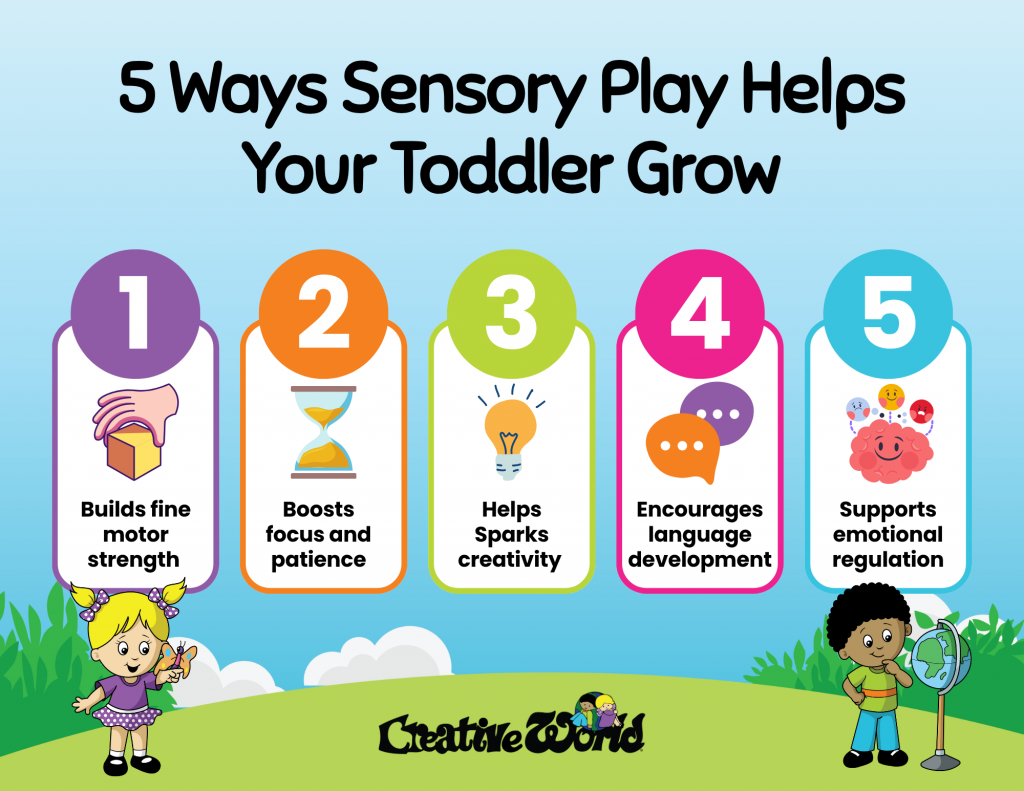
Where Mess Meets Meaning at Creative World School
At Creative World School, sensory play is a natural part of each day. Whether it is digging into a mud kitchen, painting with their whole hand, or pouring water through funnels, children are encouraged to explore with curiosity and joy.
We believe learning should feel meaningful and exciting. Sensory play is the perfect example of how discovery and development work hand in hand. Want to see how our classrooms come alive with hands-on learning? Come explore, play, and grow with us.


